|
Half-Marathon (and Half-Centenary) Man
The half-marathon referred to is a fictional version of the annual springtime event run in Bath (known locally as the ‘Barf-Arf’) and the half-centenary is claimed by author Peter Lovesey as he returns to the murderous world of running fifty years on from his prize-winning debut Wobble to Death.
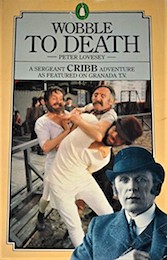 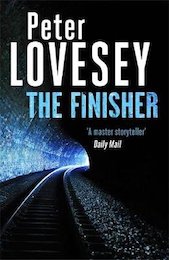
In Peter’s new book, The Finisher [Sphere], the Bath half-marathon takes centre stage, though the title has nothing to do with who wins the race, but is the rather ominous nickname of the gang-master of exploited illegal immigrants who is prepared to kill to enforce discipline and who knows how to dispose of the bodies.
When a pair of Albanian refugees make a break for freedom from this modern-day slavery, their escape coincides with the Bath half-marathon where some 5000 others are also running for it. It is just as well, then, that Superintendent Peter Diamond of Bath CID is in charge of crowd control, especially as many of the runners in the race seem perfectly capable of committing murder and the race route passes a local landmark known as ‘The Tunnel of Death’.
Mass-participation fund-raising marathons were a thing of the future, and jogging greeted with deep suspicion, when Peter Lovesey wrote Wobble To Death, which is set in the brutal world of Victorian walking races (or ‘Wobbles’). Nowadays they are all too regular events which attract thousands of entrants and provide hours of fun for tourists confused by blocked-off streets and trapped by a seemingly endless stream of panting humanity, often in fancy dress. (I speak from experience here, having had to shelter for almost two hours in a Franciscan monastery until the Florence half-marathon had passed the main doors.)
This year’s Bath Half-Marathon took place just before the Corvid Lockdown in March, so a publicity opportunity – to have runners carrying copies of Peter’s book – was missed. Back in 1970, however, when Wobble To Death came out, publisher Macmillan did stage a running (or ‘wobbling’) themed publicity stunt; a sponsored ‘Wobble’ around Sloane Square in London for the charity Shelter.
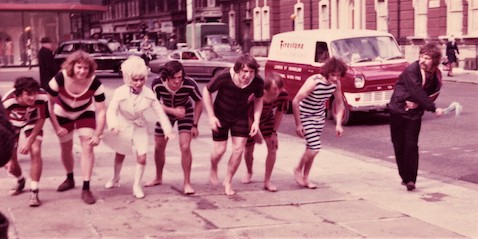
Police photographs from the event reveal a line-up of starters in Victorian swimwear (possibly employees of Macmillan?) with a notable interloping guest star. Third from the left, dressed in fashionable mini skirt, white boots and white raincoat is the unmistakeable figure of (Dame) Barbara Windsor, who gamely gave her support to the event, not long after her iconic appearance in Carry On Camping. Amazingly, there was never a Carry on Wobbling.
Lockdown Rediscoveries
More than thirty years ago as a debut crime novelist, I found myself on a promotional tour with fellow Collins Crime Club writer Magdalen Nabb (1947-2007), by then the well-established author of the ‘Marshal Guarnaccia’ series set in Florence, where she lived. Being far better known, Magdalen travelled first class but occasionally we met up on station platforms and on one such occasion Magdalen, having scoured several bookshops, asked me: ‘Why doesn’t anyone read Simenon anymore?’
For a moment I was at a loss, for while it was true that (at the time) Maigret was not on television and the novels of Georges Simenon were usually available only in second-hand bookshops, I had a personal problem with that question. As an impressionable young crime writer, I thought I really should educate myself in the genre, especially the works of someone who was referred to reverentially by many stalwart CWA members not by name, but simply as ‘The Master’.
Back then, I was happy to call Elmore Leonard ‘The Boss’ but thought I should defer to my elders and betters (well, elders) and read some Simenon. Perhaps it was bad luck that I chose two Simenon novels written in the 1930s as my introduction because I found the casual anti-Semitism (not unknown in English ‘Golden Age’ stories of the period) rather difficult to take.
Years later I tried some Maigret novels written in the 1950s, when Simenon lived in North America, and found them much easier to get on with. During lockdown, another Simenon title came my way and I thought: why not?
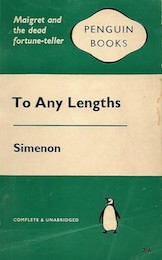
To Any Lengths was first published in 1944 and is set in a Paris suffering a heat-wave, so naturally Maigret drinks ice-cold beer or chilled white wines from Alsace – at every opportunity and in copious quantities (with the odd Calvados thrown in at meal times) even when on duty. This is a Paris where the war and occupation have never happened and Maigret solves a murder by instinct, a seemingly inexhaustible supply of manpower and in a wreath of pipe smoke. But then, you read Simenon for the atmosphere he creates with minimal effort and for the psychological pen-portraits he provides of even the most minor characters, and in that he certainly delivers.
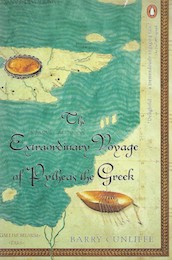
I bought my first copy of The Extraordinary Voyage of Pytheas the Greek in a bookstore in North Carolina sixteen years ago and have bought at least three others since due to the inability of fellow archaeologists to return books they have borrowed.
Written by archaeologist Barry Cunliffe (actually Professor Sir Barrington Windsor Cunliffe), it tells the remarkable story of the 4th century BC explorer Pytheas, of the then Greek city of Massalia (now Marseille), who sailed out of the Mediterranean, beyond the ‘Pillars of Hercules’, turned right and carried on northwards until eventually reaching Iceland. On his return, he wrote a book about his travels, which was probably ridiculed and disbelieved at the time, around 320 BC.
From the scraps of Pytheas’ book which survive and his own extensive knowledge of the Bronze and Iron age world, Barry Cunliffe has re-imagined, in a fluent and very palatable way, this extraordinary voyage around Spain to Armorica (Brittany), Cornwall, possibly Mona (Isle of Man) then along the west coast of Scotland to the Orkneys and eventually Iceland. What Pytheas did on the way and how he recorded his voyage with a basic form of navigation by latitude plus the fact that it was probably four hundred years before such a voyage was duplicated simply add to the extraordinary-ness.
Lockdown Learning
Like many self-isolators, I have tried to make the most of my lockdown time to improving my general knowledge. This has involved discovering many television channels which I did not previously know existed (there are more than four! Who knew?) and I have gleaned facts which will surely come in useful in a crime-fiction based pub quiz in the future.
I was well aware that crime writer Edmund Crispin, author of the 1946 classic The Moving Toyshop, was, under his real name of Bruce Montgomery (1921-1978), a composer of film music and provided the scores to many British movies including several Carry On films. I did not know that he had also scored The Brides of Fu Manchu, though perhaps he kept quiet about that one.
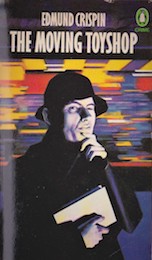 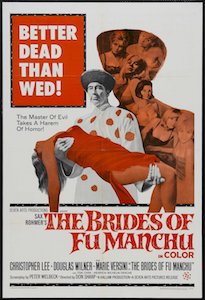
Similarly, I was well aware that Donald Hamilton (1916-2006), an American of Swedish heritage, was a distinguished mystery writer and creator of Matt Helm, a genuine rival to James Bond, but played on screen by Dean Martin with tongue so firmly in his cheek it must have hurt his jaw.
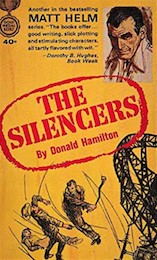 
I was, however, unaware that Hamilton was also the author of the novel The Big Country which was turned into the 1958 panoramic western starring (and produced by) Gregory Peck. If you haven’t seen the film, you will certainly know the music score, even though it wasn’t written by Bruce Montgomery.
Odds & Sods
Veteran thriller writer Derek Robinson made his name with stories of flying in the RFC in World War I and the RAF in WWII, and also wrote some pretty good spy novels in a career which began with the Booker short-listed Goshawk Squadron in 1971. Under his own publishing imprint, Whistle Books, Robinson has now produced a short collection of notes from a writer’s life under the title Odds & Sods.

Unsurprisingly, these notes reflect Robinson’s interest in, and considerable knowledge of, aircraft, flying and the two world wars, but there are also diversions where things have intrigued or annoyed him. Things worth making a note of, perhaps for inclusion in a future novel; something which is second nature to a writer. There are also – and one would have liked more – reflections on other writers, including a great story about Raymond Chandler, a rather acidic one about John Fowles, and thoroughly-deserved praise for Lionel Davidson’s classic adventure story The Rose of Tibet.
Turning Away From the Dark Side
Many authors, some of them personal friends, have been tempted away from crime fiction to the sunlit uplands of historical fiction. Sarah Dunant was one, Minette Walters another, and now Italian crime writer Marco Malvaldi too has spurned the Dark Side.
Well, perhaps not quite, for his latest novel does contain two murders and lots of intrigue, with no less a character than Leonardo Da Vinci as the protagonist and de facto detective hero.
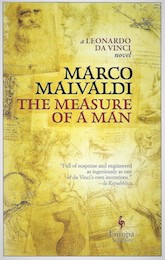
The Measure of a Man [Europa Editions] is set in Milan in 1493, a time of political infighting and jealousy among the duchies of a yet-to-be-unified Italy (the book admits, the story has ‘a lot of Dukes’) as the city states of Milan, Florence, Siena, Lucca and Venice vie with each other and nobody seems to mind if the French invade the Kingdom of Naples. Add in scientific discoveries, painting and sculpture (this is the Renaissance after all), forgery, counterfeiting, crude attempts at industrial espionage, ‘Jesuates’, spies, mistresses and Leonardo’s mother, and you have a rollicking tale told with a dry wit and many a knowing wink to the 21st century reader.
(In particular, note the result of a French spy’s attempts to exploit Leonardo’s homosexuality. It’s not what you think, and the consequences of the encounter are, today, world famous.)
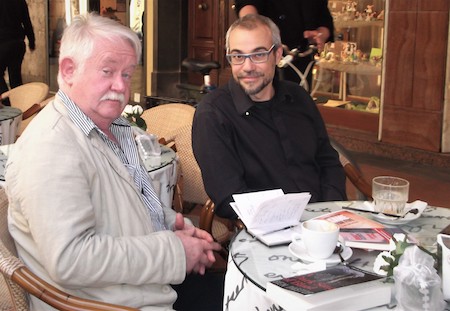
When I first met Marco Malvaldi in his home town of Pisa, he was basking in the success of his comic crime novels set in and around a local pub, the Bar Lume, on the coast of Tuscany, which Marco referred to as ‘Mussolini’s mosquito coast’. The books were adapted for Italian television as I delitti del Bar Lume in 2013 and the show is now in its seventh season.
In recent years he has spread his (still comic) wings into historical fiction with The Art of Killing Well, set in 19th century Tuscany, and now with Measure of a Man, which, I have to say, has been produced by Europa Editions to a very high standard, including almost all the illustrations in the Italian hardback edition, which I am trying to read in tandem. This is a well-produced softback rather than paperback book and a joy to hold and feel, as well as read, despite one howler in translation which even I spotted.
Sisters Down Under
It is my fault, not theirs, that I was unaware of the Davitt Award presented by the Sisters-in-Crime organisation in Australia until I read of it on the excellent Shots Confidential blogspot. To be honest, I was unaware that there was an Australian chapter of Sisters-in-Crime, but now I know, I will follow their Davitt Awards with interest, if for no other reason that the ‘long list’ for the 2020 Award has no less than 84 crime novels in contention.
Now it is many years since any trade or professional body – apart from sommeliers and ale-conners – trusted me to be a judge of anything, but the Davitt Award seems to have a very relaxed attitude to entries with two authors each having two novels on the long list. They, however, cannot compete with Rachel Amphlett who has three novels on that 2020 list! Once again it is probably my fault that I have not come across the ‘bestselling and internationally acclaimed’ (her website) Rachel Amphlett before and it is even more shaming once I discovered that she had published no fewer than 23 novels in the last nine years, whereas it took me twenty-nine years to reach the same number.
In the Days Before Netflix
I realise that some of the younger readers of this column occasionally have difficulty in understanding the cultural references in crime novels written in the far distant past, i.e. before 2012.
Being of great age, this is rarely something which troubles me, but recently one reference did cause a brief double-take.
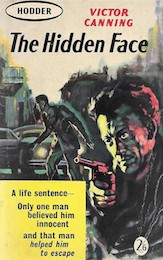
One of the great pleasures of the Corvid Lockdown has been the chance to lower the Pisa-like tower of books I have been meaning to read for some time. One of these, The Hidden Face, was a thriller by the ever-reliable Victor Canning, first published in 1956. In it, our hero is falsely imprisoned for a murder he did not commit, escapes and goes hunting the real murderer. At one point he is in London but has to lay low, off the streets, in the afternoon after the pubs shut at lunchtime (yes, they did), and so he goes to a cinema and tells the reader: I saw the whole programme round twice…
Now I never actually did that, but I do remember the days when it was perfectly possible to go into a cinema and see two films (a ‘main attraction’ and a ‘support’ or a Primo and then Secondo as one might say) plus an advertising feature and a newsreel or Look At Life short, all for the price of one admission and there would be nothing to stop you repeating the process unless you were misbehaving on the back row of the stalls and fell afoul of an usherette with a torch and an attitude.
Incidentally, The Hidden Face, which I thoroughly enjoyed, also contains one of the earliest references in thriller fiction (that I have found) to Operation Bernhard, the Nazi plan to flood Britain with forged banknotes during WWII, though of course Margery Allingham second-guessed the plot in Traitor’s Purse in 1941.
Slaughtering the Opposition
Karin Slaughter’s new novel The Silent Wife [HarperCollins] is bound to be a best-seller because, well, Karin Slaughter’s books usually are, though this one should not be confused with The Good Wife, The Second Wife or The Last Wife; titles by other writers which have already appeared this year.
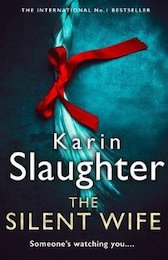
The novel features her series hero Will Trent, of the Georgia Bureau of Investigation, which could not be more topical as the GBI is currently (though perhaps belatedly) investigating the shocking case of the murder of Ahmaud Arbery, an unarmed black jogger, caught on video, back in February, as well as the shooting by police of Rayshard Brooks in Atlanta in June.
More success will be coming Slaughter’s way as her 2018 stand-alone thriller Pieces of Her is due for a Netflix adaptation starring Toni Collette.
On The Beach
The anniversary of the ‘miracle of Dunkirk’ fell during May and June and lockdown gave everyone the chance to watch, if they hadn’t seen it, the film Dunkirk. Not the spectacular 2017 Christopher Nolan epic, but the equally impressive 1958 version starring John Mills, Richard Attenborough and Bernard Lee and directed by Leslie Norman, the father of film critic and thriller writer Barry and grandfather of crime writer Samantha.
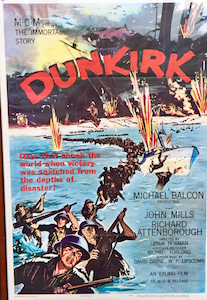 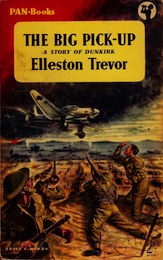
I have seen it several times and had the pleasure of discussing it at length with the late Barry Norman, but I have never read the 1955 book on which the screenplay was based, The Big Pick-Up by Elleston Trevor, a prolific and successful author even before he adopted the pen-name Adam Hall for his long-running ‘Quiller’ series of spy stories. A brief survey of the jolly old interweb tells me that copies of the book are rare, but still available at prices you are welcome to be appalled at.
Comrade Bagley
Fans of that master of the adventure thriller Desmond Bagley (1923-1983) are having a good year, not only with the paperback edition of his previously unpublished novel Domino Island (wonderfully ‘curated’ by Michael Davies), but news that an early Bagley short story has come to light.
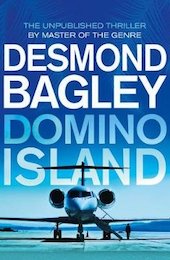
Super-fan and unofficial keeper-of-the-flame for Bagley’s work, Philip Eastwood, has tracked down the story Welcome Comrade which was written at the height of the Cold War under the name Simon Bagley and submitted with other science-fiction stories to a New York literary agent in early 1962. Welcome Comrade was the only one of those stories to find an outlet, finally appearing in April 1964 in the Magazine of Fantasy and Science Fiction.
As he supposedly only made enough money to pay for a meal for himself and his wife, Bagley moved from sci-fi to thrillers and even before the story eventually appeared in print, he had written and published his first novel, The Golden Keel, and his career path was set.
For die-hard Bagley fans interested in what seems to have been a pivotal point in his writing career, Philip Eastwood has obtained permission to reproduce Welcome Comrade on his excellent website https://thebagleybrief.com/2020/06/25/project-american-declassified/
|
|
Books of the Month
I have always been somewhat dismissive of the obsessive who refuses point blank to read a series of crime novels unless they can do so ‘in chronological order of publishing’ – indeed, they call themselves ‘chronologists’. If I had stuck to that compulsive trait, I might still not have got around to discovering James Bond, Nero Wolfe or Inspector Morse (though I have been with Jack Reacher and Bernie Gunther, among others, from the start, in real time, so to speak). There were moments, however, when I wished I had read the earlier adventures of Detective Inspector Manon Bradshaw, to better understand her back story and domestic situation before I read her latest outing.
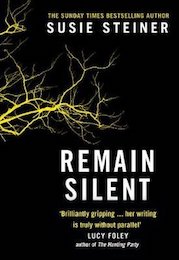
Not that it spoiled my enjoyment of Susan Steiner’s Remain Silent [The Borough Press] which has introduced me to Manon Bradshaw, instantly claiming the title of my favourite middle-aged, mouthy, harassed but fearless female police detective of the month. The plot of Remain Silent, which is a discursive novel if ever there was one, centres on the plight of migrant workers from Lithuania (‘the third most unhappy country on earth’) who are basically slave labour for large farm units in East Anglia. It is not new territory for the crime writer – Janet Neel explored it in Ticket To Ride in 2005 and Eva Dolan has more recently – but here, Manon is the star of the show and clearly not a woman to cross, especially if you are a lazy and inefficient cop, the philandering husband of a best friend or a right-wing anti-immigrant UKIP rabble-rouser.
Beginning with a hanging (suicide, or murder made to look like it?) and involving more deaths, dismemberment and a particularly nasty threat to a pregnant woman, Remain Silent could be a real shocker but it is leavened by sharp writing, witty observation and some great gags: - You can always be out-miserabled by Gerald Manley Hopkins; and, whilst watching CCTV footage of customers in Homebase – Homebase can bring on an existential crisis at the best of times, but black-and-white grainy film of Homebase is enough to make anyone take up narcolepsy.
One’s suspension of disbelief is required when a couple of the migrants escape from anti-immigrant hatred in Wisbech and seek refuge in a greasy-spoon café in that well-known liberal enclave of Frinton-on-Sea. (Who allowed a greasy spoon in Frinton, for goodness sake?) But one can forgive Susie Steiner much, and Manon Bradshaw just about anything, especially when she muses that she might like watching porn but only if John Lewis did porn.
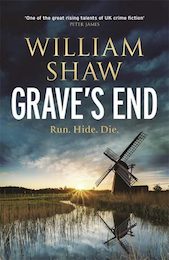
I am sure no badgers were actually hurt in the writing of Grave’s End by William Shaw [Riverrun], which features my favourite, wine-swigging single mum with teenage daughter police detective Alex(andra) Cupidi of the month.
Set in the badlands of Kent between Dungeness and Folkestone, badgers play an important role in Grave’s End in a plot which involves five (I think) homicides, the use of cyanide gas, public school bullying, a huge piece of ‘property development’ on land occupied by badgers and protected by environmental campaigners, and political skull-duggery in the run up to a general election where no-one, oddly, given the geography, mentions Brexit (though one local thug has a dog called ‘Nigel’).
Bodies turn up in freezers, caravan parks, in rivers and in underground tunnels (remember those badgers!) and Cupidi comes close to joining them when she makes the rookie mistake of going into a dark place with a character the reader hasn’t encountered before, without back-up or telling anyone. She then manages to drop her phone – for Heaven’s sake, does the woman have a death wish?
Still, the book rattles along at a fair pace as Cupidi’s investigation lurches down various paths, fortunately without the need for boring paperwork or having to go into a police station. I did have one qualm though, when a property developer – a skeleton having been unearthed on land earmarked for housing – expresses his dismay and disbelief that anyone would want to buy (a house) on a place where dead bodies are buried.
As a former archaeologist, I can assure William Shaw’s character that is not the case and is usually the last thing on a property developer’s mind.
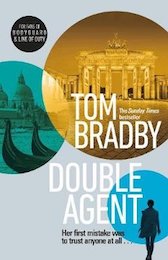
Without doubt, Kate Henderson is my favourite senior female MI6 officer of the month as she appears in Double Agent [Bantam] by Tom Bradby, the direct follow-on to last year’s impressive spookfest Secret Service which gave us her back story of betrayal and deceit in the bedroom as well as the boardroom. (If MI6 have boardrooms and for security reasons, I must be vague about this.) Not to mention the possibility that the British Prime Minister might be a Russian agent. (With a name like Boris, who’d have thought it?)
Regular readers of spy-fi are well aware that the most dangerous enemy of MI6 is often MI5 and will have all their fears comfortingly confirmed by the intricate double-crossing in the plot. But what if you add in the rivalry between the Russian secret intelligence services? To reveal more would require Tom Bradby to have to kill me.
To get the most out of Double Agent, I would strongly recommend reading Secret Service, for this is very much ‘Volume 2’ of Kate Henderson’s story and leaves the reader hungry for a Volume 3.
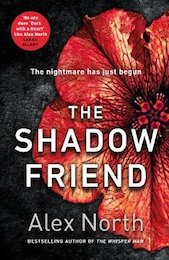
The Shadow Friend by Alex North [Michael Joseph] is not a conventional crime novel, but it is a very spooky one. Owing more to Stephen King (duly acknowledged) than Conan Doyle, this is a childhood trauma coming home to roost twenty-five years after an appalling murder in a school in the dank, creepy town of Gritten.
The general air of unease generated is punctuated by some genuine shocks and a wonderfully sustained air of unease. There is a well-drawn female detective, but it is what may be lurking in the woods – or perhaps your dreams – which makes the hairs on the back of your neck stand to attention.
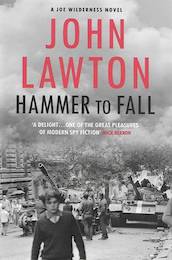
For legal reasons I was unable to review John Lawton’s Hammer To Fall [Grove Atlantic] when it was published in March. Frustrated, due to the lockdown, at being unable to remonstrate with either publisher or author in person, I resorted to every author’s favourite retailer, Amazon, and in less time than it took to grow what Professor Barry Forshaw calls ‘a sequestration beard’, I finally had my hands on a copy.
It was worth the nervous wait, which had seen me exhaust my meagre supply (not being able to go to Tuscany this Spring) of Vecchia Romagna, and I mention strong drink because one of the outrageous, and very shady, deals in which Lawton’s hero Joe Wilderness gets involved, is selling bootlegged vodka to the Russians over the Finnish border at the height of the Cold War.
But that’s the thing with Joe Wilderness, now on his third outing. One is never sure whether he is a full-time grifter and part-time spy, or the other way round; or indeed if he is a cynical class warrior paying lip-service to his lords and masters in MI6, or indeed, at heart, an unrepentant romantic – and that’s part of the joy of Lawton’s books, where both hero and plot and predictably unpredictable.
Hammer To Fall is a rich cacciucco of a novel, almost a menu degustation of politics, class, history (the Prague Spring of 1968) and impressive spy ‘tradecraft’, with a gripping climax on a famous bridge of spies in Berlin, and it is all written with a knowing wit by an author in total command of his historical research. Fans of vintage British thrillers (surely there are some out there) will spot the homages made to Gavin Lyall, John Le Carré and Len Deighton. Lawton’s historical spy fiction has been compared to the work of the last two and also to Philip Kerr and Alan Furst. His style is distinctly his own and unlike that of any of those notables, but he is certainly in their company.
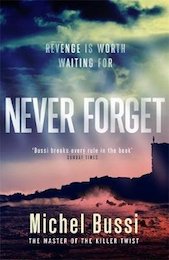
If ever a character in crime fiction had the right to use the “Infamy! Infamy! They’ve all got in in for me” line, then it is probably Jamal Salaoui, the protagonist of Michel Bussi’s Never Forget [Weidenfeld & Nicolson]. Jamal is a French Arab with a disability (a prosthetic lower leg) which does not stop him training for ‘iron man’ style running races, nor from being desired by most of the women he meets.
Whilst out running on the cliff tops of north Normandy, Jamal spots a red cashmere scarf, then a girl in a torn dress seemingly about to throw herself off the cliff. He approaches her, begging her to take the scarf and be pulled to safety. Girl and scarf go over the edge. By the time Jamal makes it down to the beach other witnesses to the girl’s fall surround the body which has the scarf tied tightly around her neck. Murder, or an impossible suicide, the girl having strangled herself on the way down?
This is only the start of Jamal’s troubles as just about every trope in crime fiction is thrown at him over the course of three frantic days, including the hunt for a serial killer and rapist from ten years’ previously, Game Theory codes, anagrams, twins, suspect policemen, DNA tests, a trail of conveniently planted written clues, arcane methods of murder, stabs-in-the-back (in more ways than one) and an over-elaborate torture scene. Plus, in a fast-forward narrative strand, the discovery of three skeletons following a rockfall in those seaside cliffs.
Plot-wise, Never Forget has everything bar the kitchen sink, including a method of faking a death which would have fooled Poirot and could have been inspired by the pre-title sequence of a Bond film. This is Agatha Christie updated (with sex, DNA samples and that modern staple, the mobile phone) then cranked up to 11, and the reader will not mind that one jot as they go along for the ride: it’s a blast.
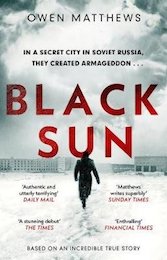
For legal reasons I missed Owen Matthews’ Black Sun when it was published last year by Bantam. However, those caring people at Corgi have sent me the new paperback edition and I am now able to join in the praise already lavished on the novel by such luminaries as Frederick Forsyth, Charles Cumming, A. N. Wilson and Maxim Jakubowski.
The year is 1961 and the setting is a secret scientific city deep inside Russia dedicated to producing the most powerful nuclear bomb ever built. Nine days before the bomb is tested, one of the leading physicists working on it is found dead, seemingly a case of suicide by horrific means. Or was it murder? Major Vasin is sent from Moscow to investigate, though only his KGB boss (for dubious reasons) seems to want him to. Hindered at every turn and followed and bugged by local security (nicely ironic for a KGB officer), Vasin doggedly pursues his mission and discovers the reality of a bomb which could produce a ‘Black Sun’ and truly be the last nuclear bomb the world ever needs.
There’s a lot of science in Black Sun, showing that Matthews knows his nuclear physics as well as he clearly knows his Soviet Russia and its history, but that should not put anyone off. If I – whose knowledge of scientific weaponry ends with Archimedes defending the city of Syracuse – can understand what is going on, anyone can and for more reasons than one, Major Vasin is a hero you really, really want to succeed.
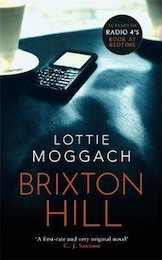
It is not difficult to spot the criminals in Lottie Moggach’s Brixton Hill [Corsair] as most of the main personalities are already in prison. One them, Rob, however, is nearing the end of his stretch and is being reintroduced to society via an open prison and a weekday job sorting donations in a charity shop. Apart from being overwhelmed by the sights and sounds of south London (and the price of a coffee) after seven years ‘away’, Rob strikes up a relationship with a woman after a seemingly accidental meeting on his way to work. What follows is a spider’s web of a plot which plays out on either side of the walls of Brixton Prison among a cast of characters all of whom are superbly drawn by Moggach with the skill and sympathy of a miniaturist old master. (Even the mostly off-stage appearances of a particularly odious, controlling husband.)
Brixton Hill paints a staggeringly believable picture of modern prison life, is tightly plotted and cleverly written. It reminded me of the handful of excellent crime novels Jacqueline Wilson wrote more than forty years ago before she turned to young adult and children’s fiction (how did that go for her?), which in my book is a very high standard to aspire to let alone reach.
Book of Not this Month
I had set aside reading time in anticipation of the July publication of the latest novel in Graham Hurley’s wonderful ‘Wars Within’ series, Blood of the Wolf.
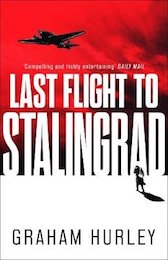
After several unfortunate altercations with numerous postmen and still no sign of the book, I contacted Graham Hurley who told me the book had been reincarnated with a new title, a new jacket and a new publication date. This means I must re-allocate the reading slot I had earmarked and wait until the year end for Last Flight To Stalingrad to be published by Head of Zeus in January 2021.
Where the Dickens
It was the 20th March (a day that will live in infamy) when licensed victuallers were forced to close their doors due to the Corvid pandemic, but I am already making plans for the time, now fast approaching, when those severe restrictions, which brought home the seriousness of the situation, will be lifted.
I have taken inspiration from Lee Jackson’s marvellous book Walking Dickens’ London and will be following in the boot-steps of Charles Dickens, perhaps unsteadily at times.

I cannot recommend Lee Jackson’s book, his websitewww.victorianlondon.org and indeed his crime fiction (published under the name L.M. Jackson) too highly as Lee is an eminent Victorianist (if that’s a word) who knows of what he writes.
My first venture up to the capital, assuming I am allowed passage on the railways, will include a visit to either or both of the famous Chop Houses patronised by Dickens, in the heart of the City.
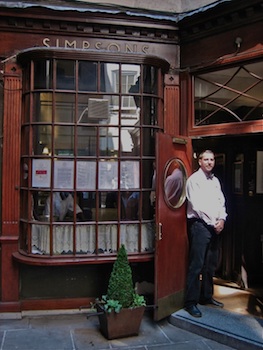 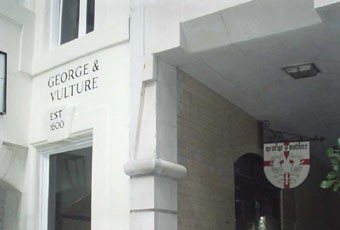
Both Simpson’s Tavern and the wonderfully-named George and Vulture are located in snug, hidden alleyways a sovereign’s throw from the Bank of England and though their fare may be traditionally English and possibly unappealing to vegetarians and vegans, they have the priceless advantage of being within staggering distance of Liverpool Street station.
Here endeth the lockdown?
Stay well, stay safe,
The Ripster.
|